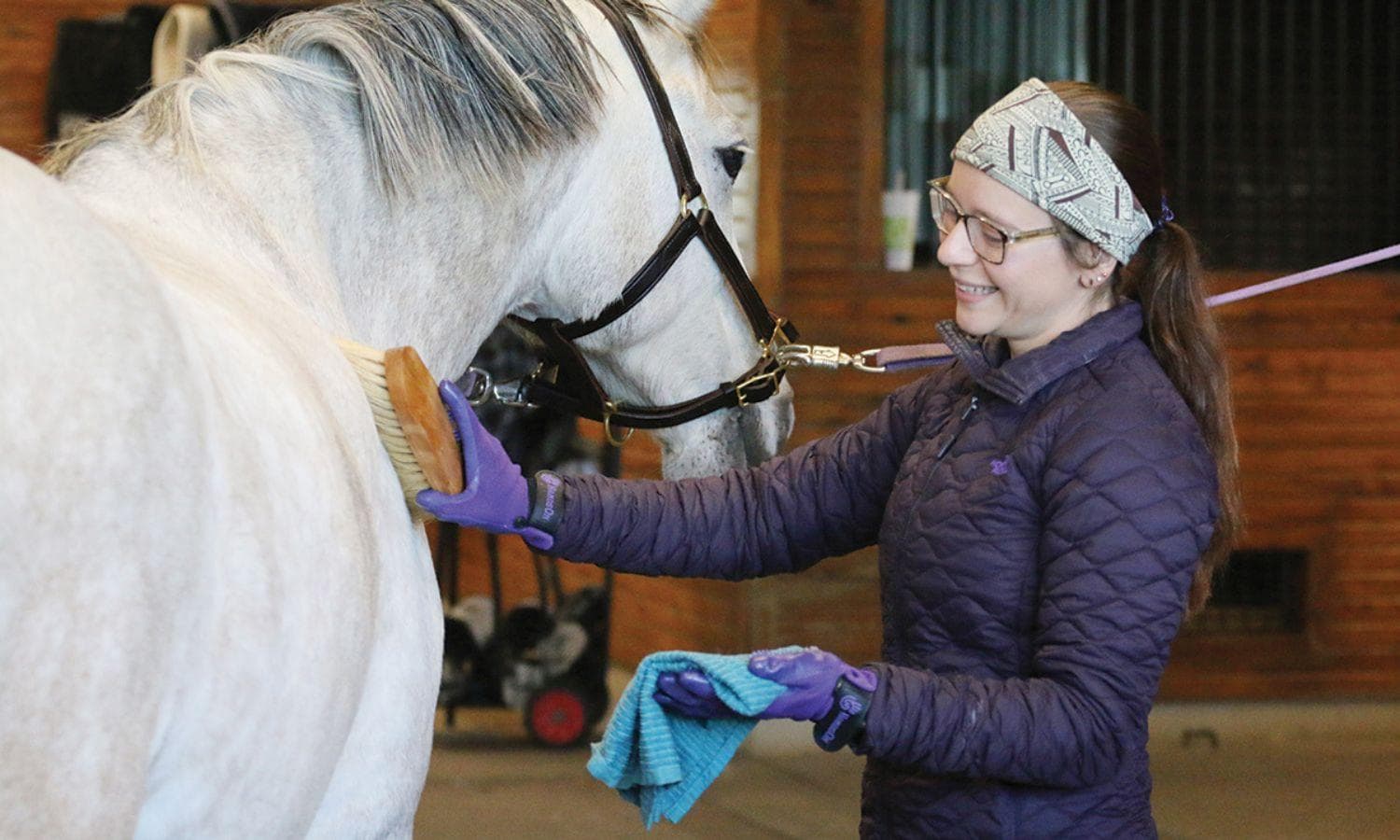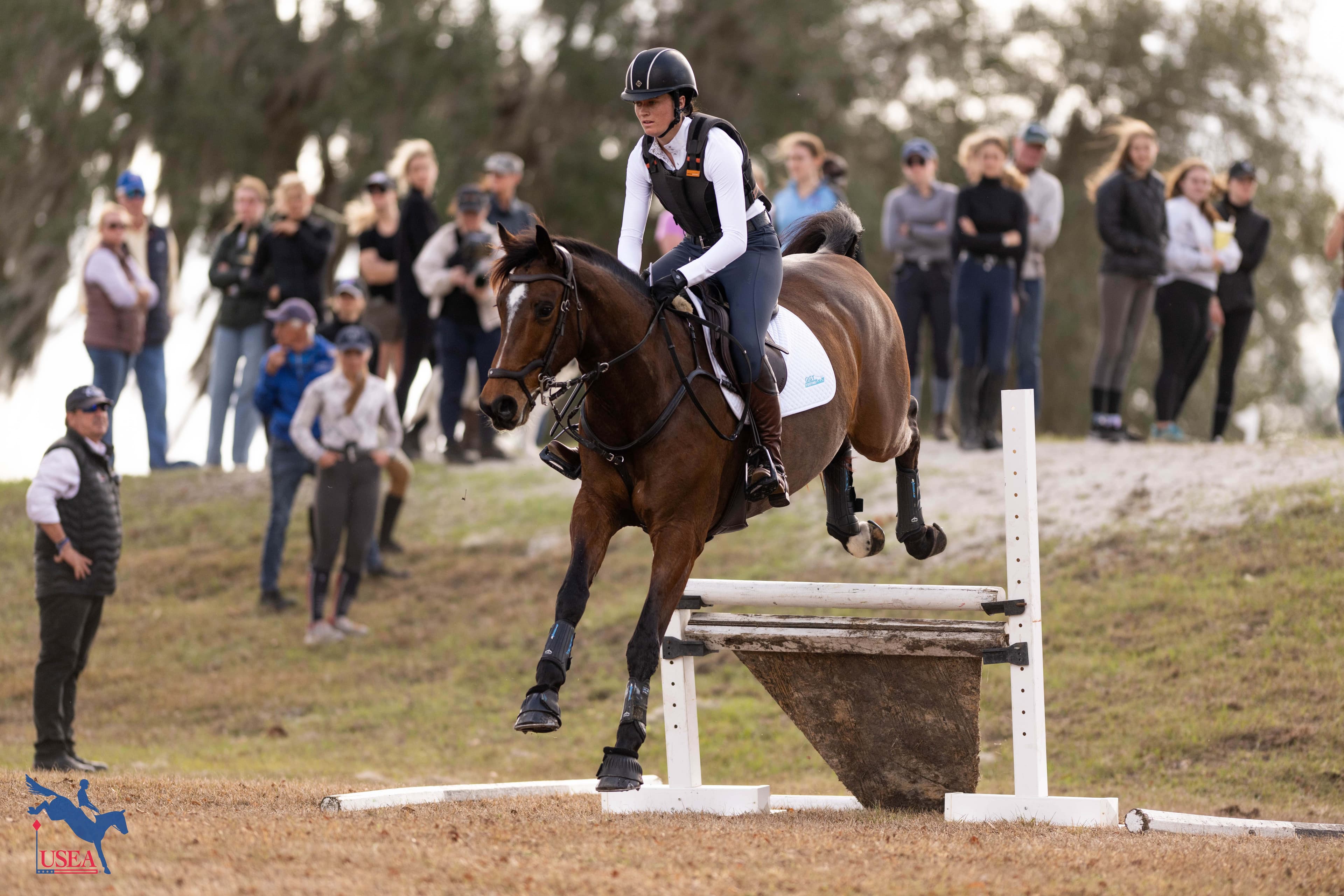Cross-Country Course Preview: The Pan American Games
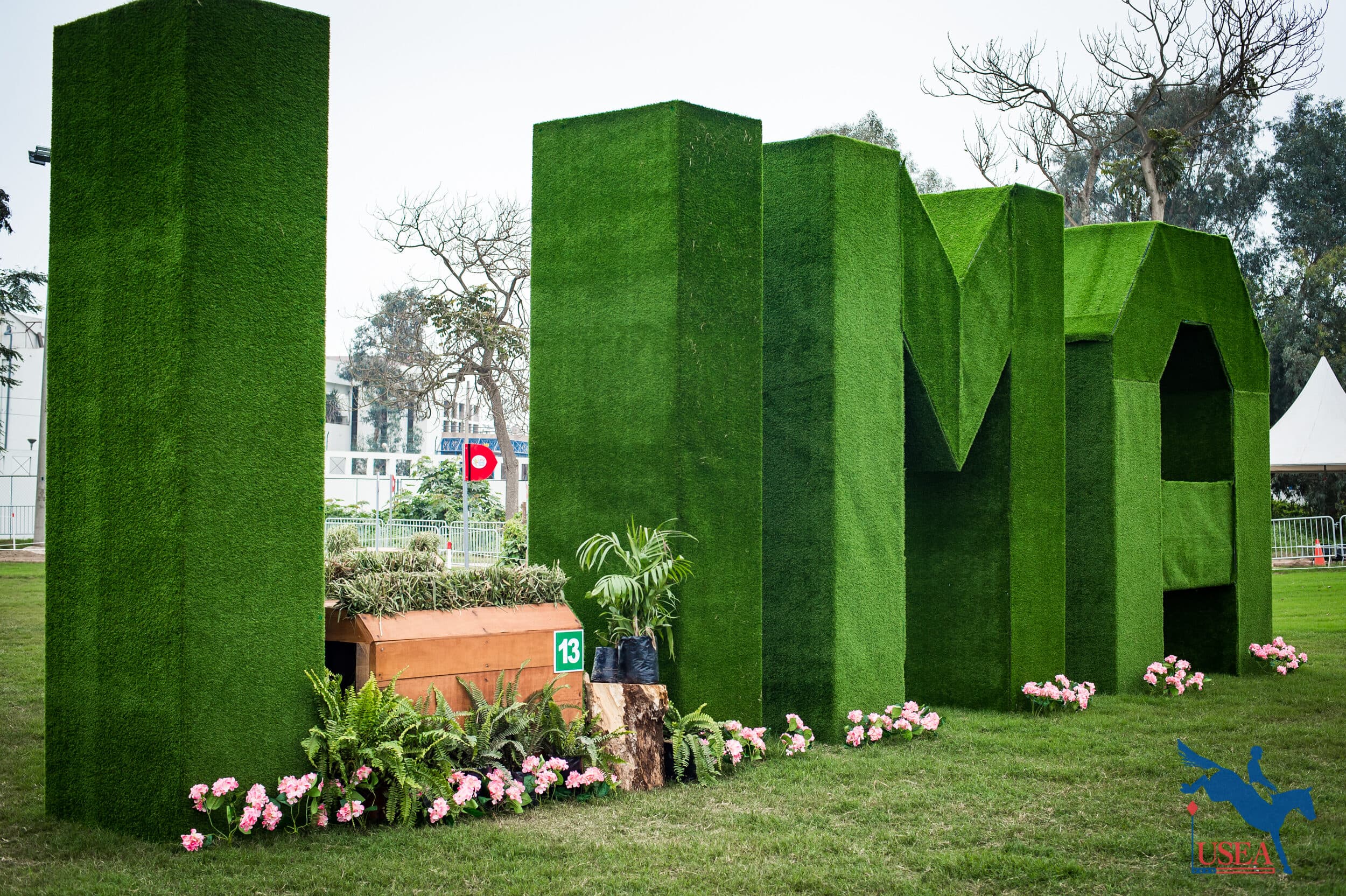
A cross-country track full of literal twists and turns awaits riders this coming Saturday at the 2019 Pan American Games in Lima, Peru. The facility itself is a year-round, permanent equestrian venue, the Army Equitation School of Lima, so the grounds lend themselves well to the CCI3*-S track that course designer Jose Ortelli has crafted.
The track doubles back on itself more than once over its four-kilometer length. At a speed of 550 meters per minute and an optimum time of 8 minutes and 14 seconds, time will be a factor, but with Lima’s cool dry winter climate working to riders’ advantages, the track will be fast.
“It is the same grass that they had in Rio – it is a little bit of the same feel,” said U.S. Chef d’Equipe Erik Duvander. “But possibly because of the ground, the root system seems a little bit stronger. You can go quite fast on it.”
The first combination on course comes up at 6ABC, a straightforward drop into water, over a coop at B and out over a brush at C. Fences 7 through 8 roll right along as single obstacles, and then an angled question at 9AB gives riders an additional option to bend directly to 10, or skip the angles and take the long way around. Indirect options are built into many of the questions, which might make taking an easier track tempting, but costly in time.
“[The track] reminds me a lot of Pau actually,” said Boyd Martin. “It is that same sort of course. It is a maximum degree of difficulty for the three-star level and on top of that, it is quite a twisty course. It is more than I was expecting to see. We are all on pretty seasoned horses, but we still have a tough mission ahead of us.”
That mission, of course, is finishing in the top two to qualify for the Tokyo 2020 Olympics. There are only two qualifying spots up for grabs in Lima, and every competing team will be angling to earn them.
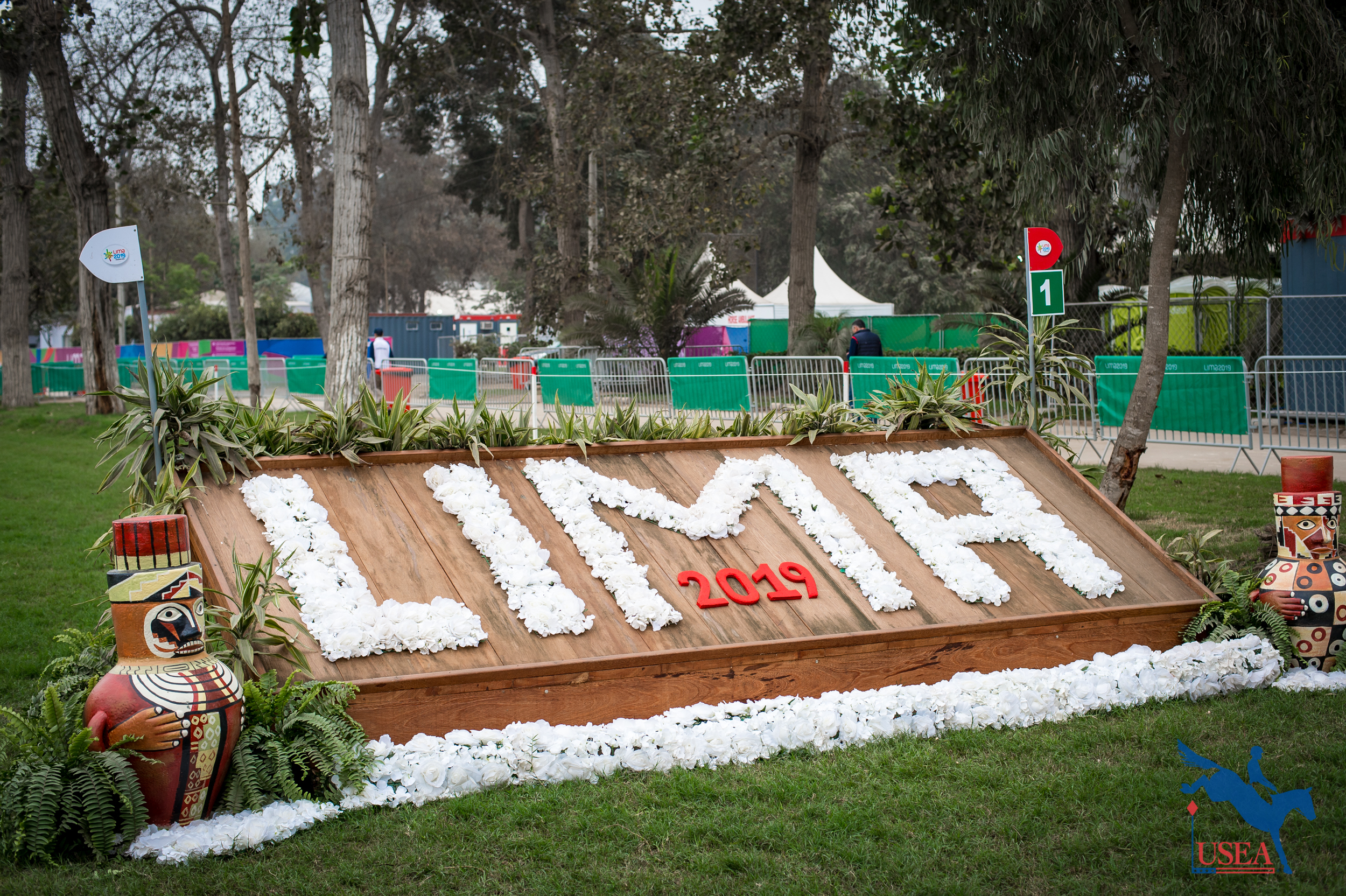
Fence 1 is built to full height and presents the horses with lots of bright flowers to look at right off the bat.
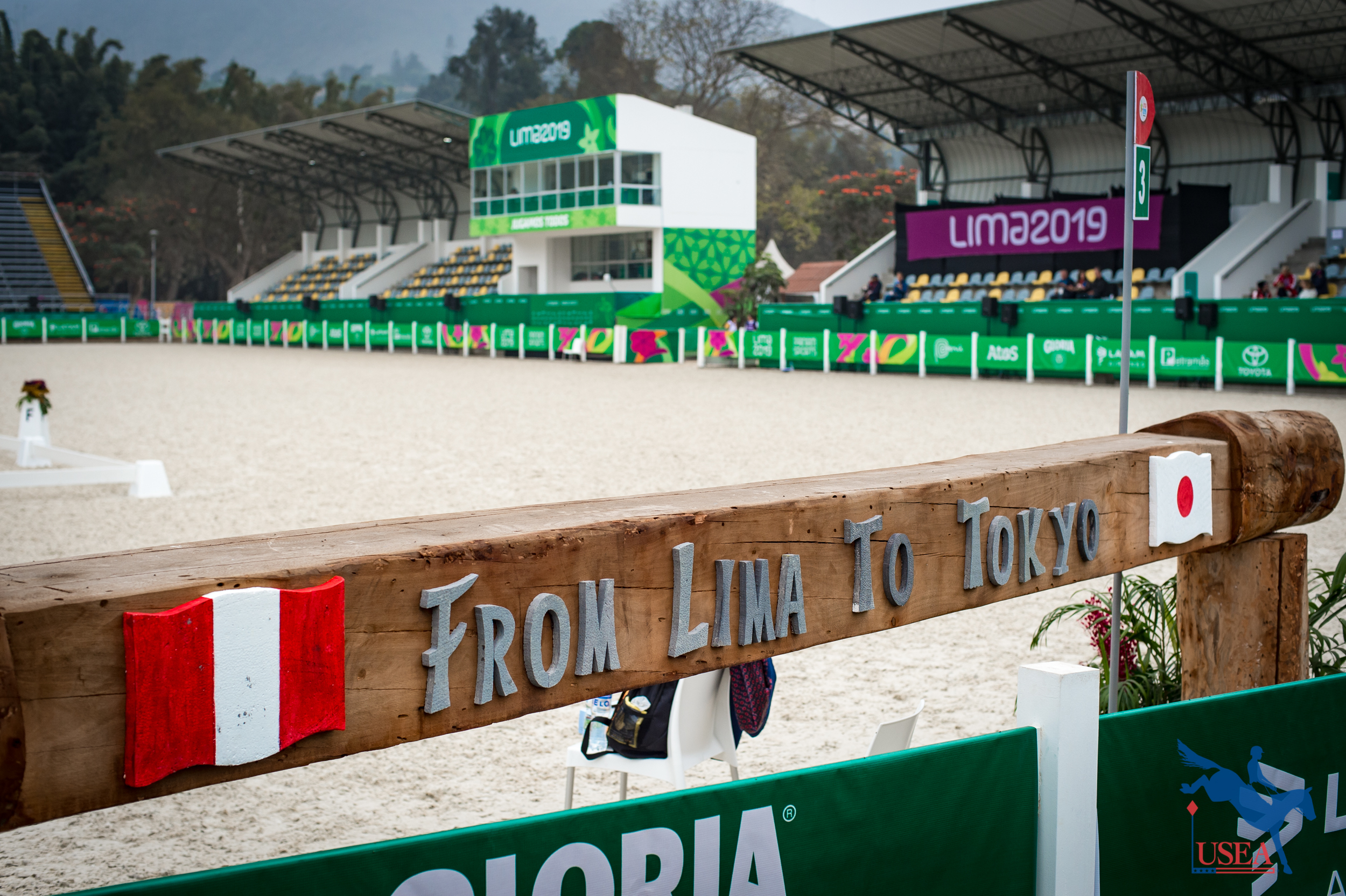
After a table at fence 2, riders jump down into the main arena over this Tokyo-themed rail.
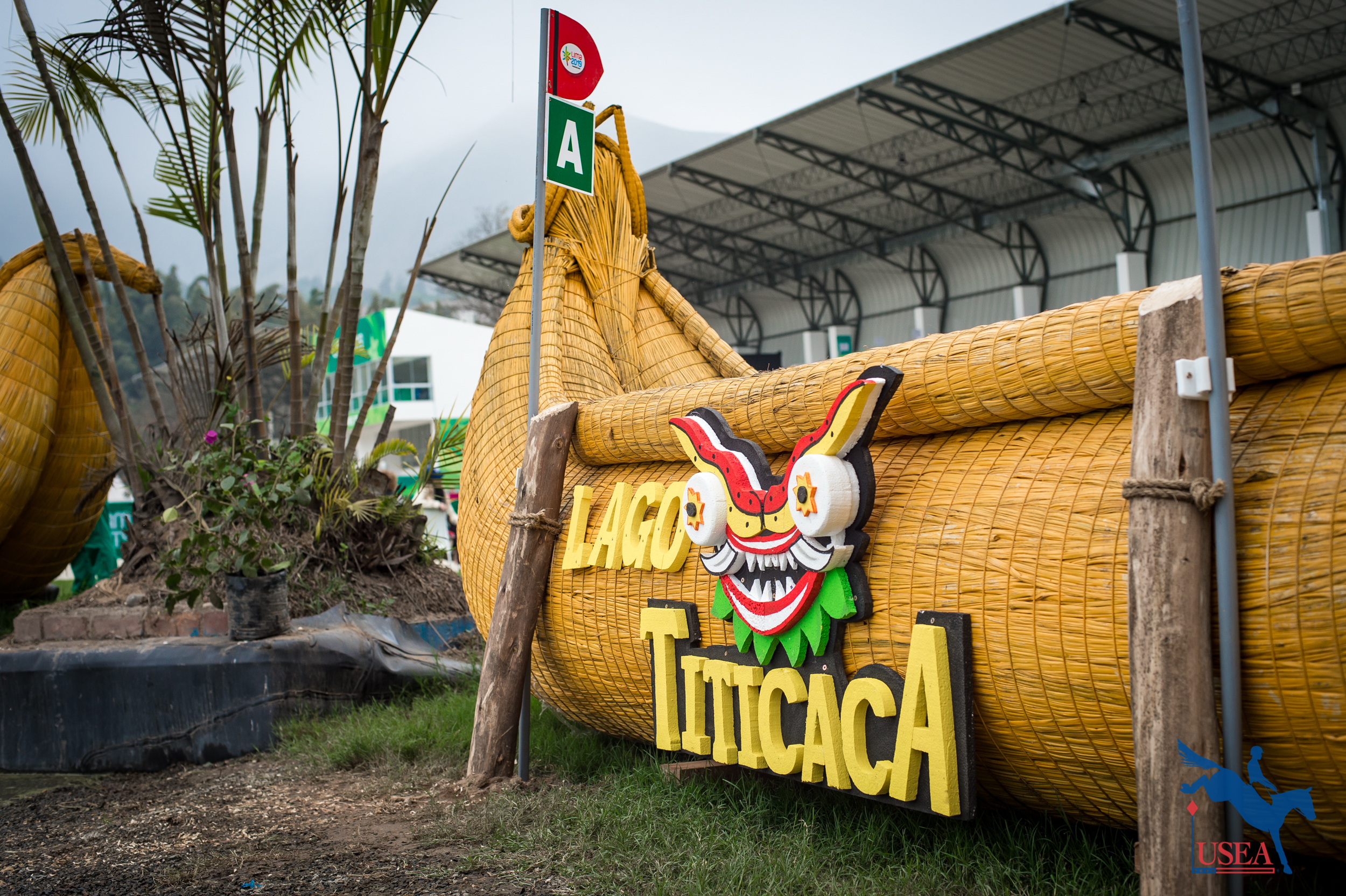
Fences 4 and 5 are set inside the arena, and as they exit, they must make a right turn to the first water obstacle, which jumps in over this A element dedicated to Peru’s famous Lake Titicaca.
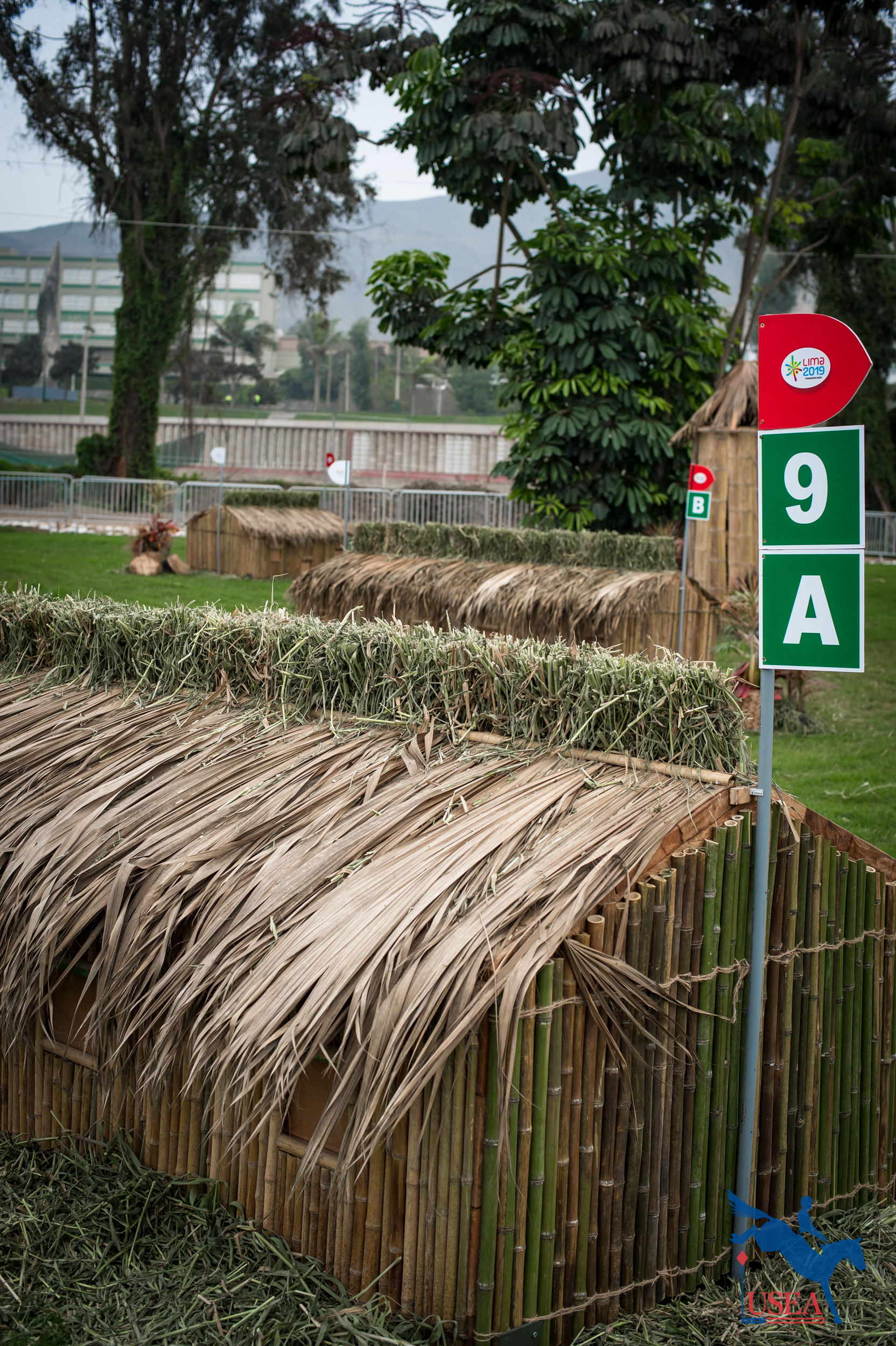
Fence 7 is a quick ride after the water complex, and fence 8 is a skinny log at the top of the track’s first uphill rise. Fence 9AB, shown here, is a set of angled brush cabins that ride in two strides. To the left at the back of the frame is fence 10, which looks to be an option to ride directly to. Or, a longer indirect option is available (not pictured) to the right of the angled obstacles.
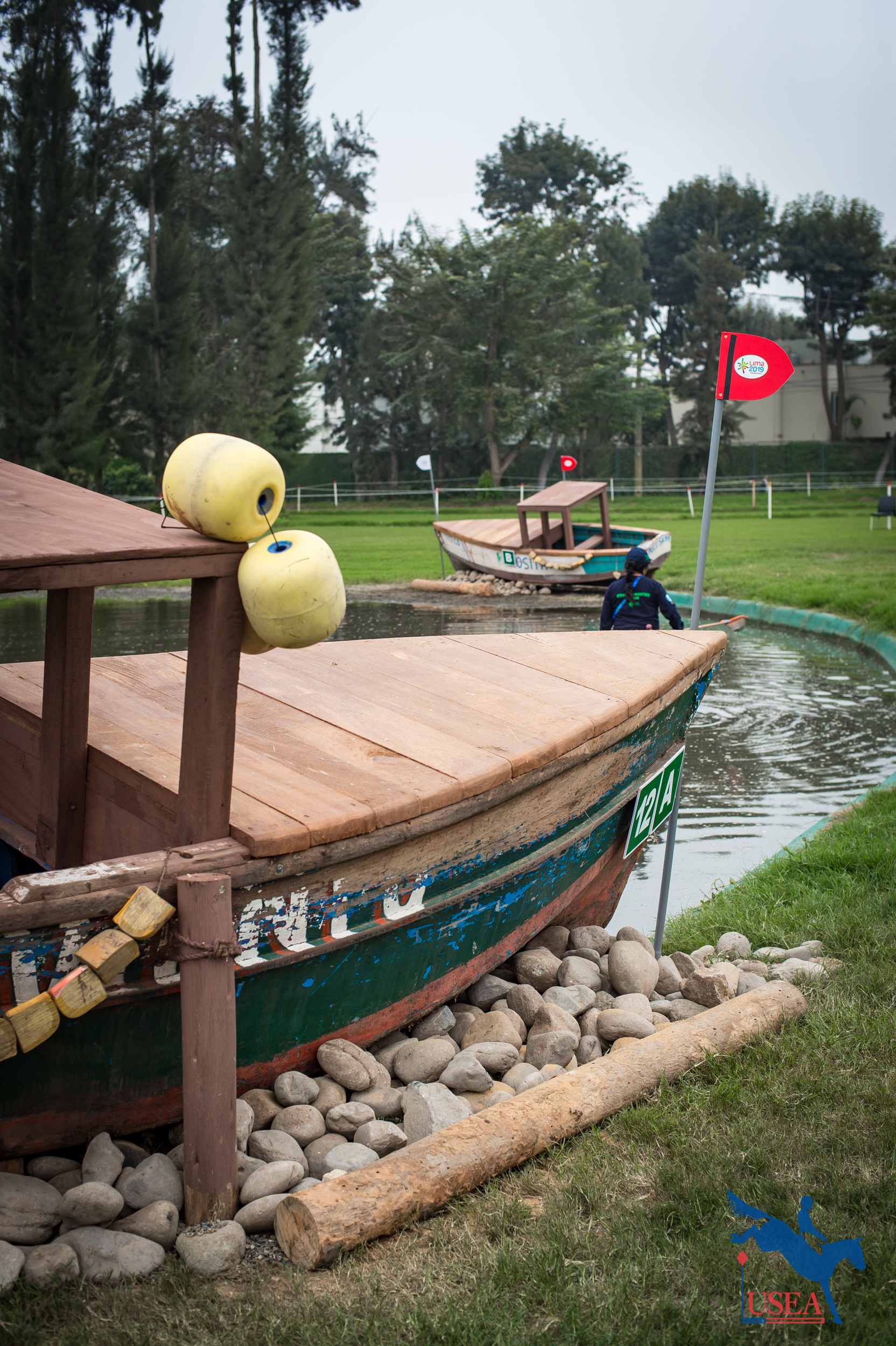
A wide ditch at 11 will ride on a straightforward, galloping stride, after which the second of three water obstacles comes up at 12. The “Pescadores Tiene Opcion” is an ode to Peru’s fishermen, with A and B a pair of slanted boats that will ride into, and out of the water. Riders get an option here too, but it will be costly in time if they take it.
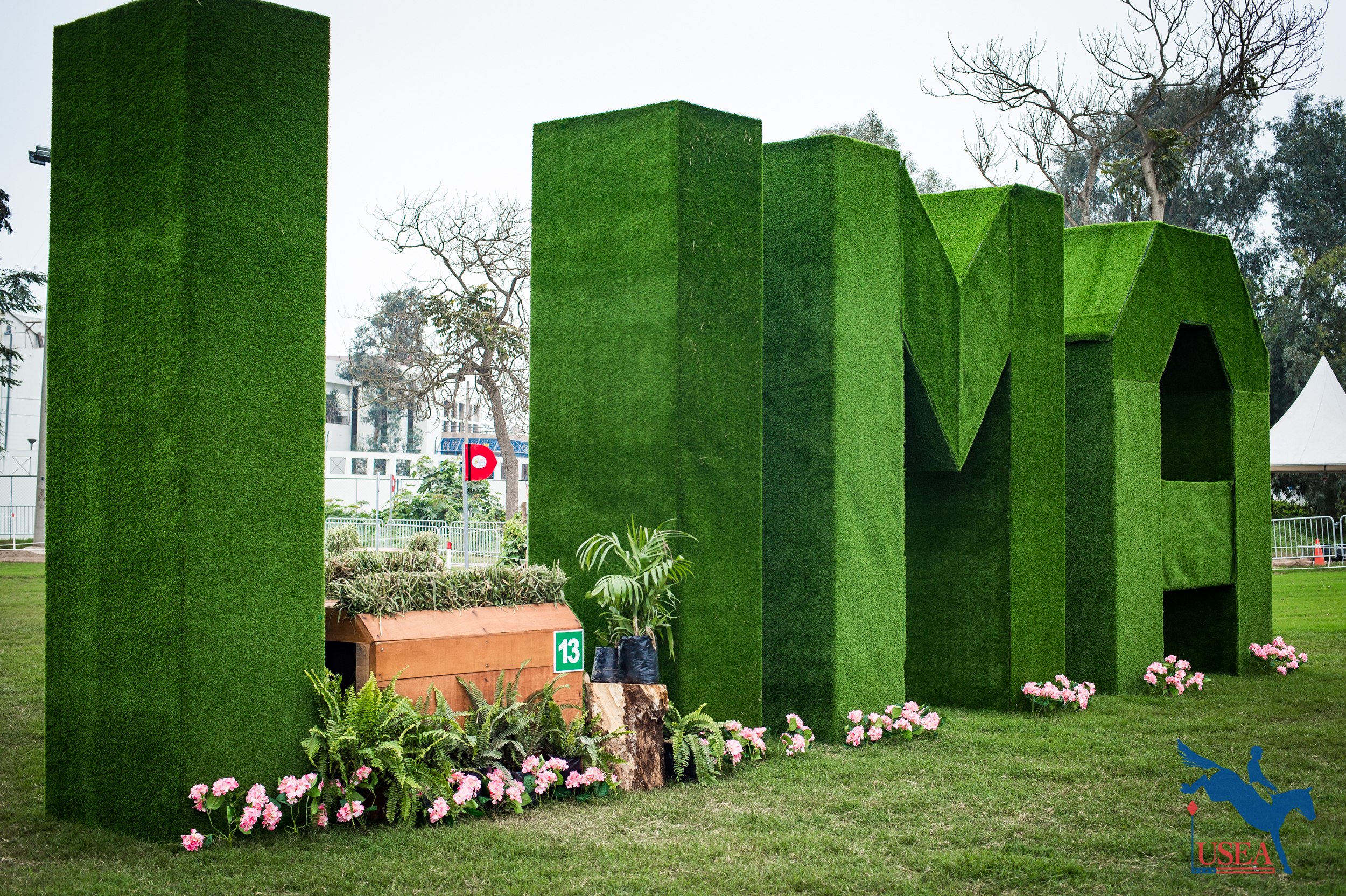
The way to fence 13 is where the doubling back begins; the track runs next to itself for much of the rest of the way. It’s back up to this massively decorated brush oxer at 13, which while visually stunning, will not be easy to photograph with the riders jumping through the letter L!
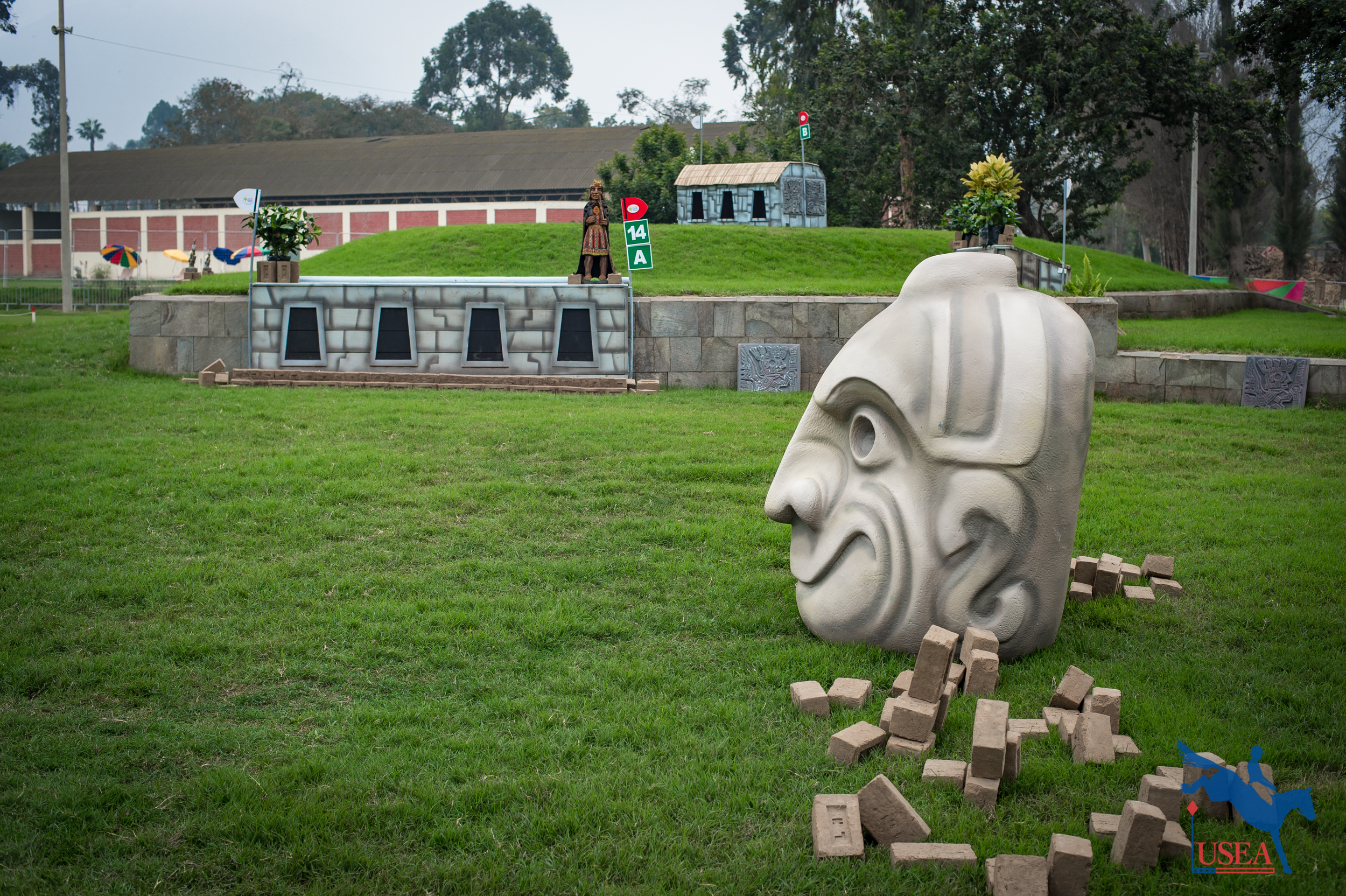
After 13, it’s back towards the direction of the boats, but this time riders must tackle the Macchu Picchu hill, an ABCD combination at 14. Out of frame in this shot are the CD options down the hill, off a right-hand turn.
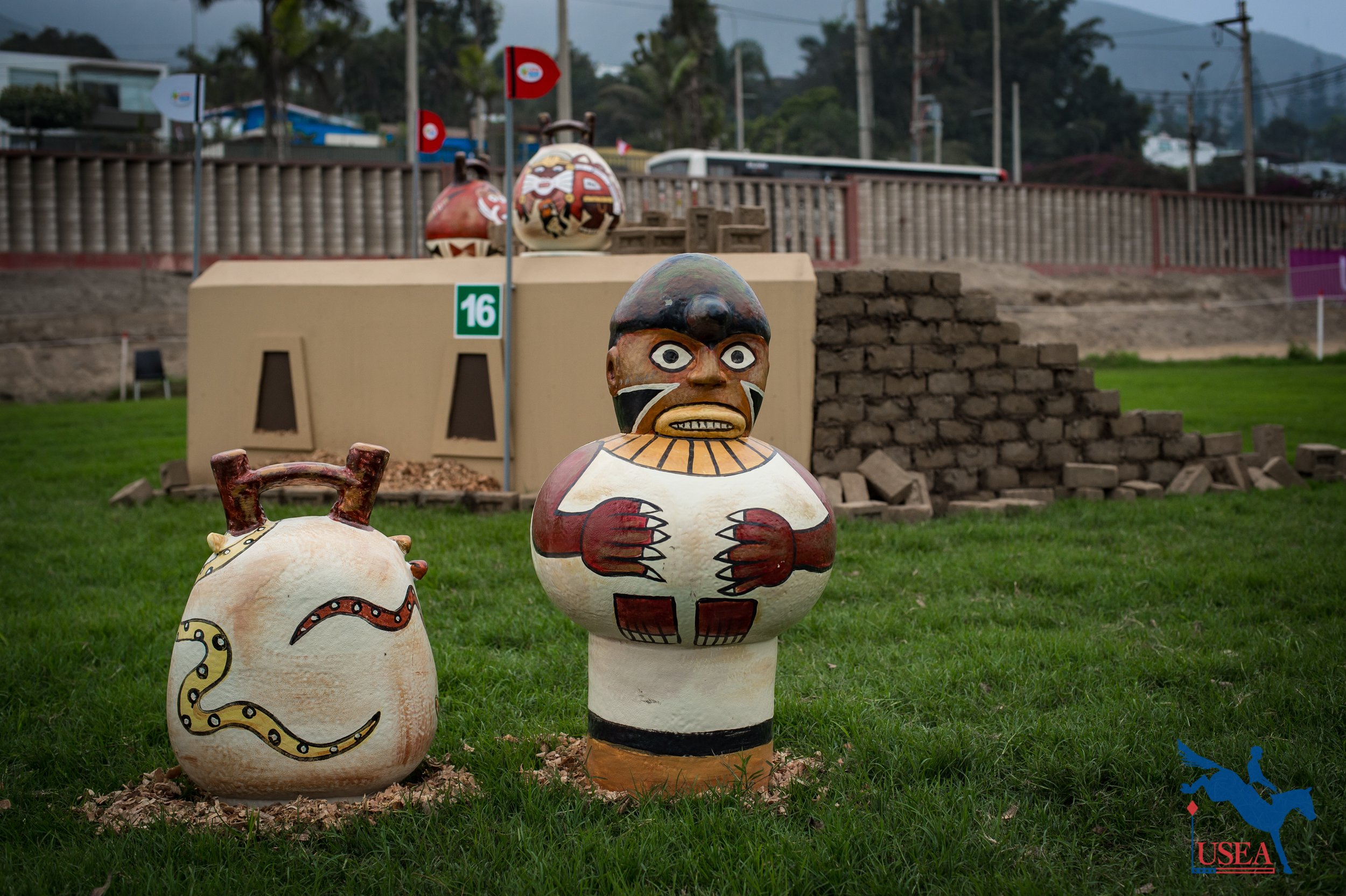
Fence 15 is an open oxer decorated with many bushels of potatoes, and from there it’s on to another tricky question at 16. The decoration shown here could be a distraction for horses that must turn around it and focus immediately on the corner at 16. Even the option fence here has the same sort of papier-mâché distraction set a stride or two before the obstacle.
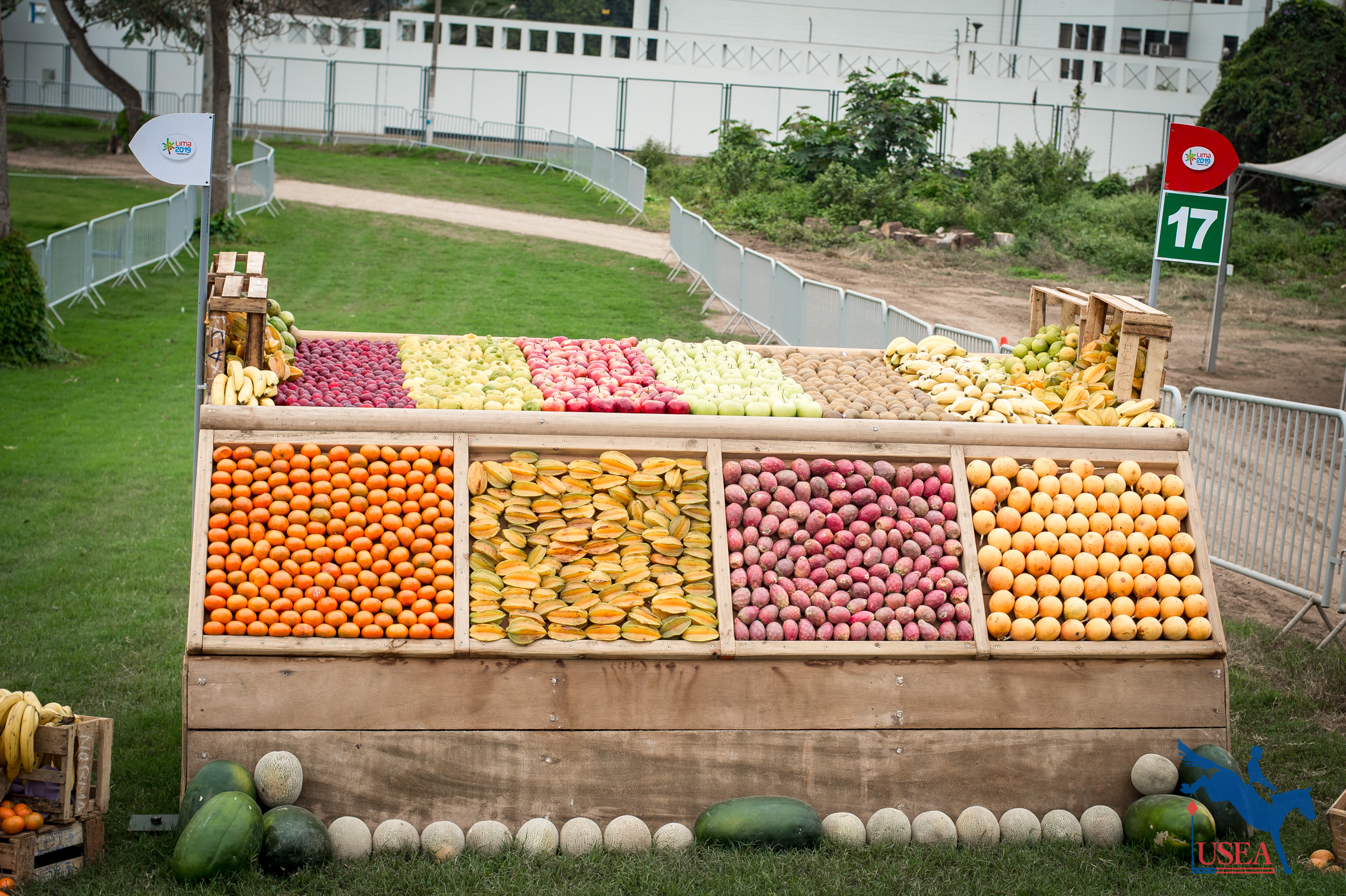
Fence 17 is well decorated with real fruit and rides down the hill, giving it a size challenge in the optical illusion it presents.
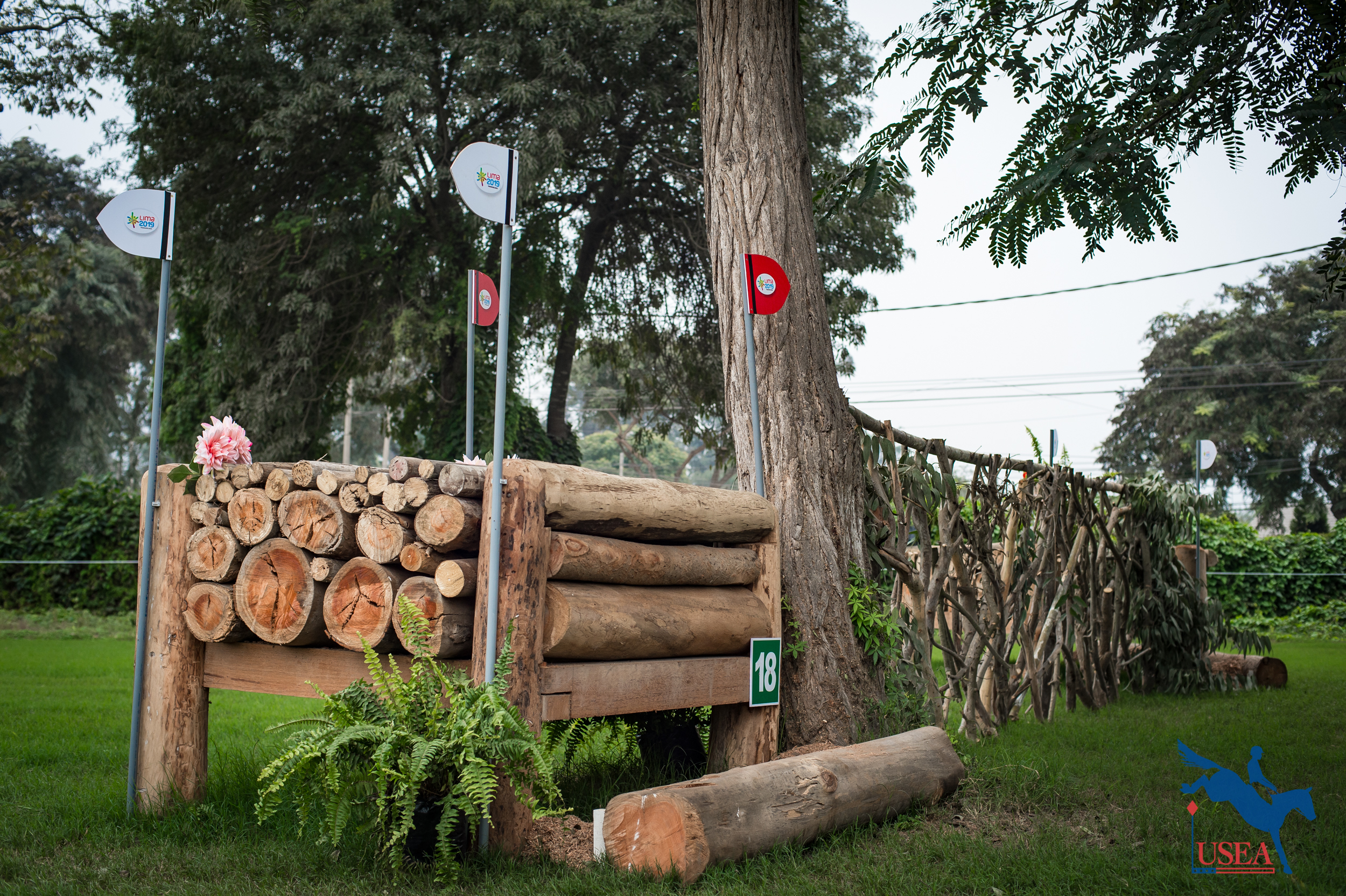
Fence 18 is a skinny table with a wider option on the other side of the decorative track; it’s another fence set out on its own that’s a long gallop from 17.
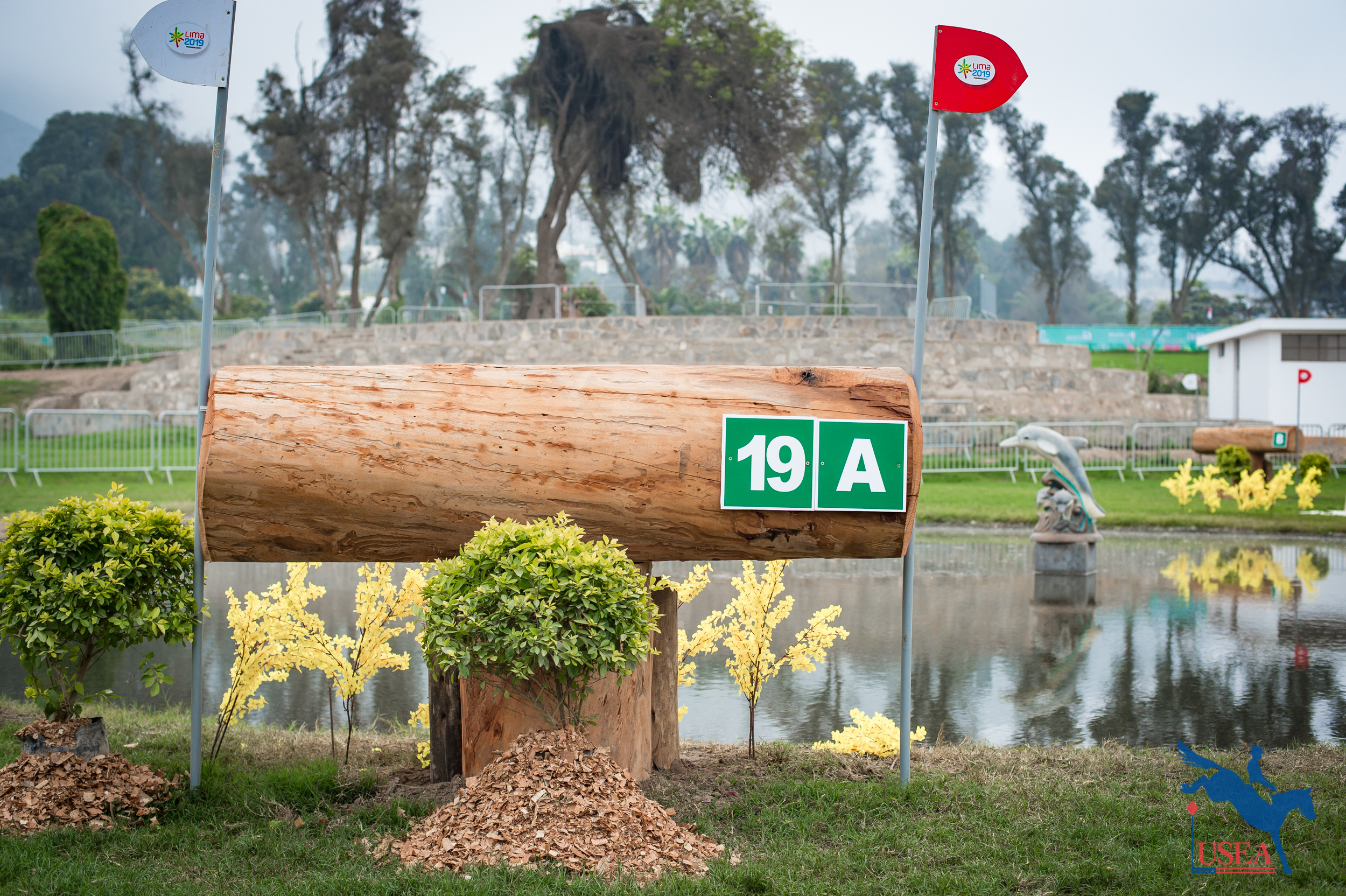
The final water obstacle here at Fence 19 is a skinny in and out of the water with no option; fitness may be the question here as riders are nearing the last portion of the course.
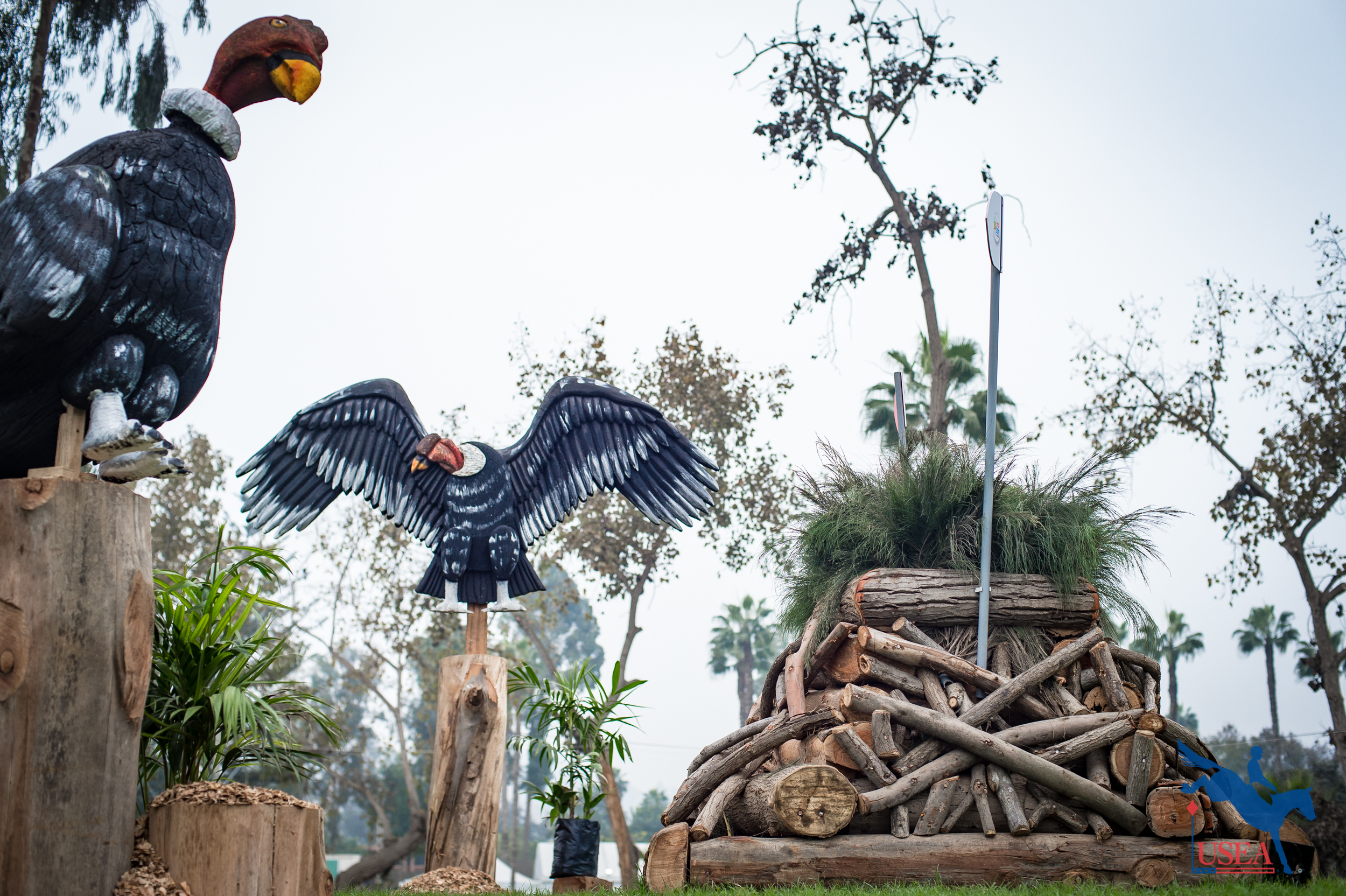
Fences 20 through 22 are single obstacles that include a sturdy triple log, trakehner, and an oxer, and then it’s on to what may be the most dramatic obstacle here at the Pan Ams, a skinny brush at the top of a very steep hill near the main arena. Balance will be the challenge here as the B element is set in a short bending line at the bottom of the hill.
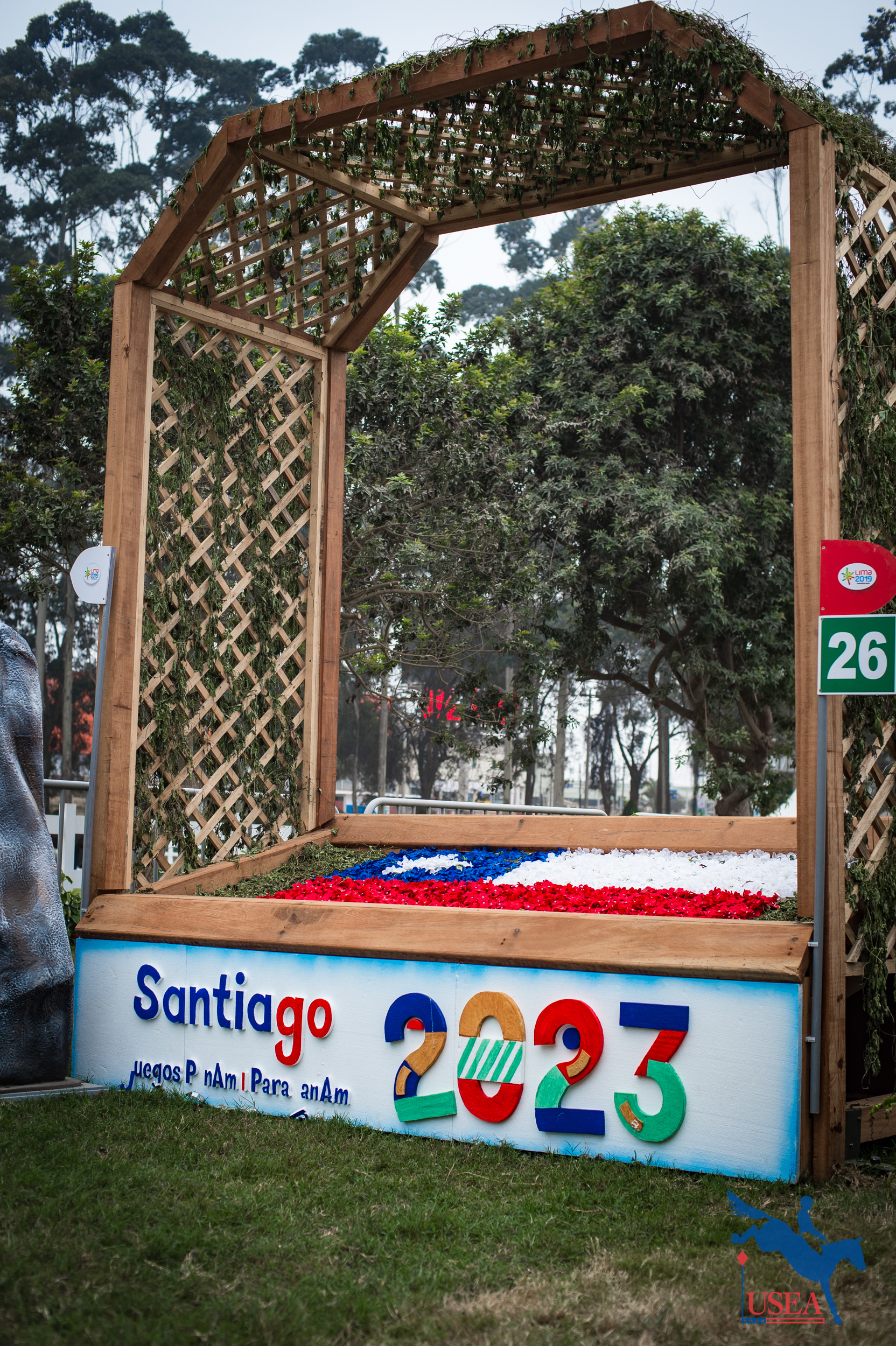
After one more long gallop back to a skinny rail at 24 and a big, bright table at 25, the final fence here at 26 hints at the 2023 Pan American Games in Santiago, Chile.
Competition kicks off tomorrow morning with dressage at 9:00 a.m. Central time. Keep it locked on the USEA social media for updates throughout the day! Click here to access the live scores.


